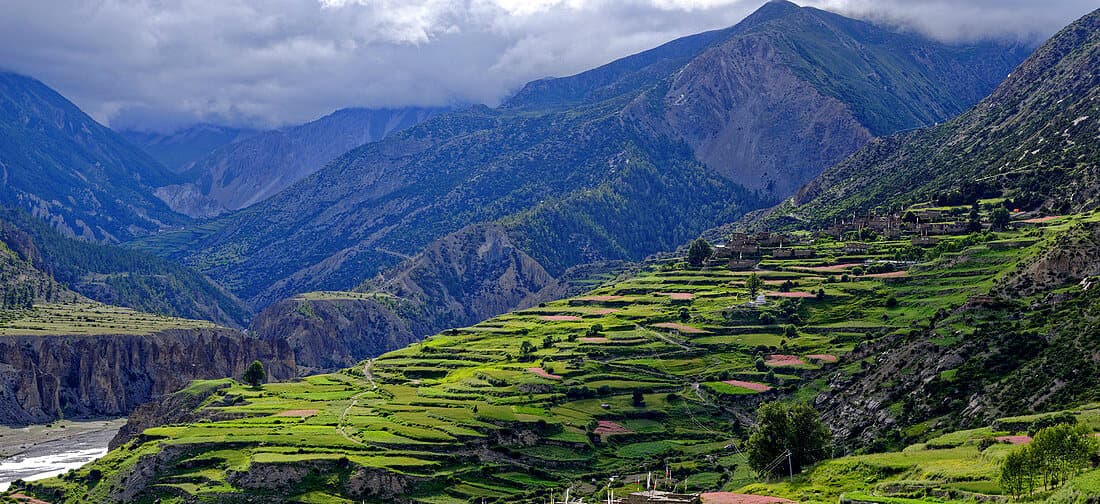The monsoon season in Nepal, running from June to September, is a time of enchantment as the rains bring the landscape to life with lush greenery and vibrant blooms. While the season may deter the typical trekker and climber, it offers a plethora of other attractions that remain largely untapped by the average tourist. From cultural festivals brimming with color and tradition to lush jungles teeming with wildlife, the monsoon transforms Nepal into a vivid spectacle of natural and cultural wonders.
Beyond the adventure activities that dominate during drier months, the rainy season in Nepal invites visitors to explore its rich heritage and tranquil natural settings in a different light. Witness the transformation of the environment as it turns into a haven for biodiversity and explore sacred sites in solitude, offering a serene and introspective experience. This season serves as a perfect backdrop for those looking to enjoy the cultural depth and scenic beauty of Nepal without the crowds.
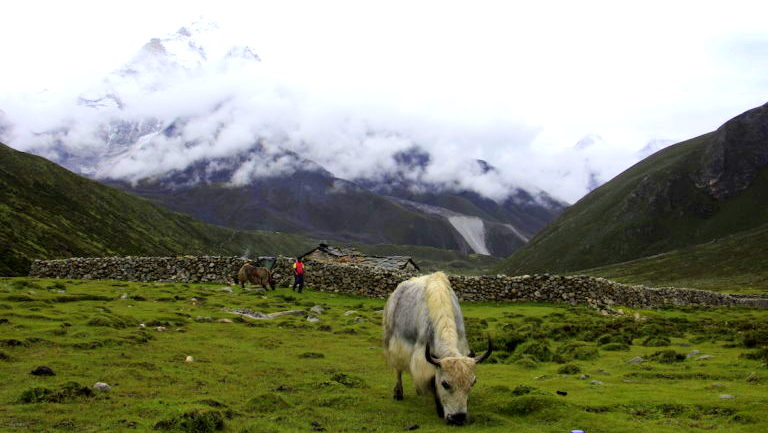
At Luxury Holidays Nepal Pvt. Ltd., we offer an unparalleled experience with our Monsoon Magic: Explore Nepal During the Rainy Season tour. Discover the vibrant cultural festivals, lush wildlife sanctuaries, and serene tea gardens of Ilam during this unique season. Our expert guides ensure a comfortable and enriching journey through Nepal's stunning monsoon-transformed landscapes, making it an ideal choice for those seeking a luxurious and immersive travel experience away from the typical tourist paths. Choose us for a memorable and majestic monsoon adventure in Nepal.
Lush Landscapes of Nepal During the Monsoon Season
Nepal's monsoon season transforms the country into a vibrant canvas of lush, verdant landscapes, creating a visual feast for nature lovers and photographers alike. As the rains descend, they nourish the land, resulting in a spectacular display of greenery that covers mountains, valleys, and forests. Here’s a guide to experiencing the lush landscapes of Nepal during the rainy months:
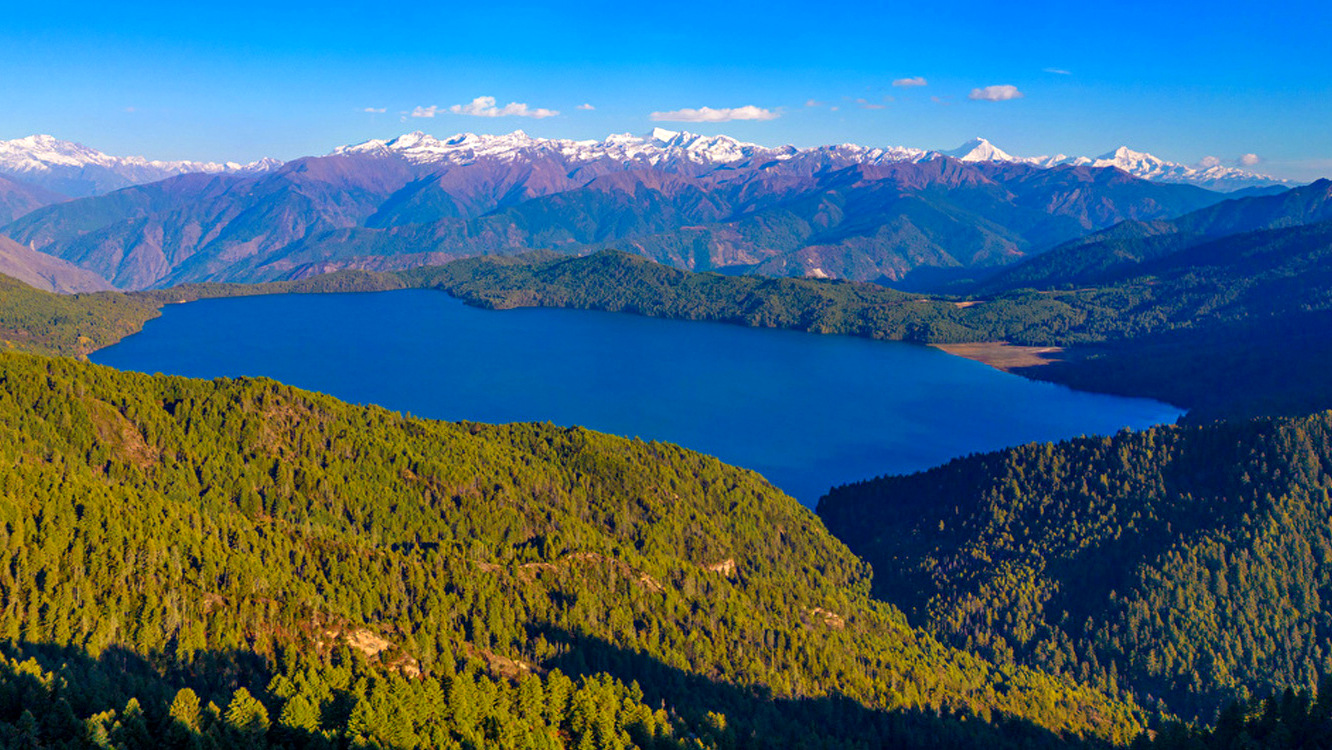
The Kathmandu Valley: While urban at its core, the Kathmandu Valley is surrounded by hills that burst into life during the monsoon. Areas like Shivapuri Nagarjun National Park become particularly vibrant, with thick, green forests and blooming flowers. Hiking through these areas provides a refreshing escape from the city and offers panoramic views drenched in emerald hues.
Pokhara and the Annapurna Foothills: Pokhara itself turns into a lush paradise with its lakes reflecting the freshly washed forests and surrounding hills. The rice terraces in the Annapurna foothills are especially picturesque during this time, as farmers plant their crops and the paddies fill with water, creating a stunning patchwork of green fields.
The Terai Region: The plains of the Terai, bordering India, are known for their national parks like Chitwan and Bardia. These areas thrive during the monsoon as new life burgeons, enhancing the biodiversity that includes not only the flora but also the fauna. This region’s jungles are dense and rich, offering a completely different perspective than the high mountain landscapes.
Ilam's Tea Gardens: The famous tea gardens of Ilam display an intense green that seems almost surreal during the monsoon. The continuous rains give the tea leaves a deep, vibrant color that is iconic to this region. The mist that often settles over the hills adds a mystical quality to the landscape, making Ilam a must-visit for those seeking beauty and tranquility.
Rara National Park: Home to the pristine Rara Lake, this national park in northwestern Nepal showcases a unique landscape that becomes lush during the monsoon. Surrounding the lake, alpine forests and meadows bloom with wildflowers and dense shrubbery, creating a breathtaking natural setting that feels untouched by time.
Travel Tips for Exploring Lush Landscapes:
- Prepare for mud and leeches: Wear sturdy waterproof boots and carry salt or leech socks if you plan on walking through wet areas.
- Pack rain gear: A good waterproof jacket, rain cover for your backpack, and a waterproof case for any electronic devices are essential.
- Be cautious of slippery paths: Monsoon rains can make trails slippery. Take your time, use trekking poles for stability, and always follow the advice of local guides.
Exploring Nepal during the monsoon allows visitors to witness the country in its most lush and vibrant state. The landscapes, saturated with the life-giving monsoon rains, offer a unique and compelling beauty that contrasts sharply with the more arid visuals of other seasons. This is an ideal time for those who appreciate the quiet beauty of nature and the serenity that comes with fewer tourists.
Adventure Activities in Nepal During the Monsoon Season
While trekking and climbing are often the highlights of Nepal's tourism, the monsoon season offers its own unique set of adventure activities suited for the rain-drenched landscapes. Here's a look at some thrilling adventures you can embark on during Nepal's rainy months:
White-Water Rafting: The monsoon rains swell Nepal's rivers, creating perfect conditions for white-water rafting. Rivers like the Trishuli, Bhote Koshi, and Seti become ideal for exhilarating rafting experiences, with rapids ranging from moderate to challenging.
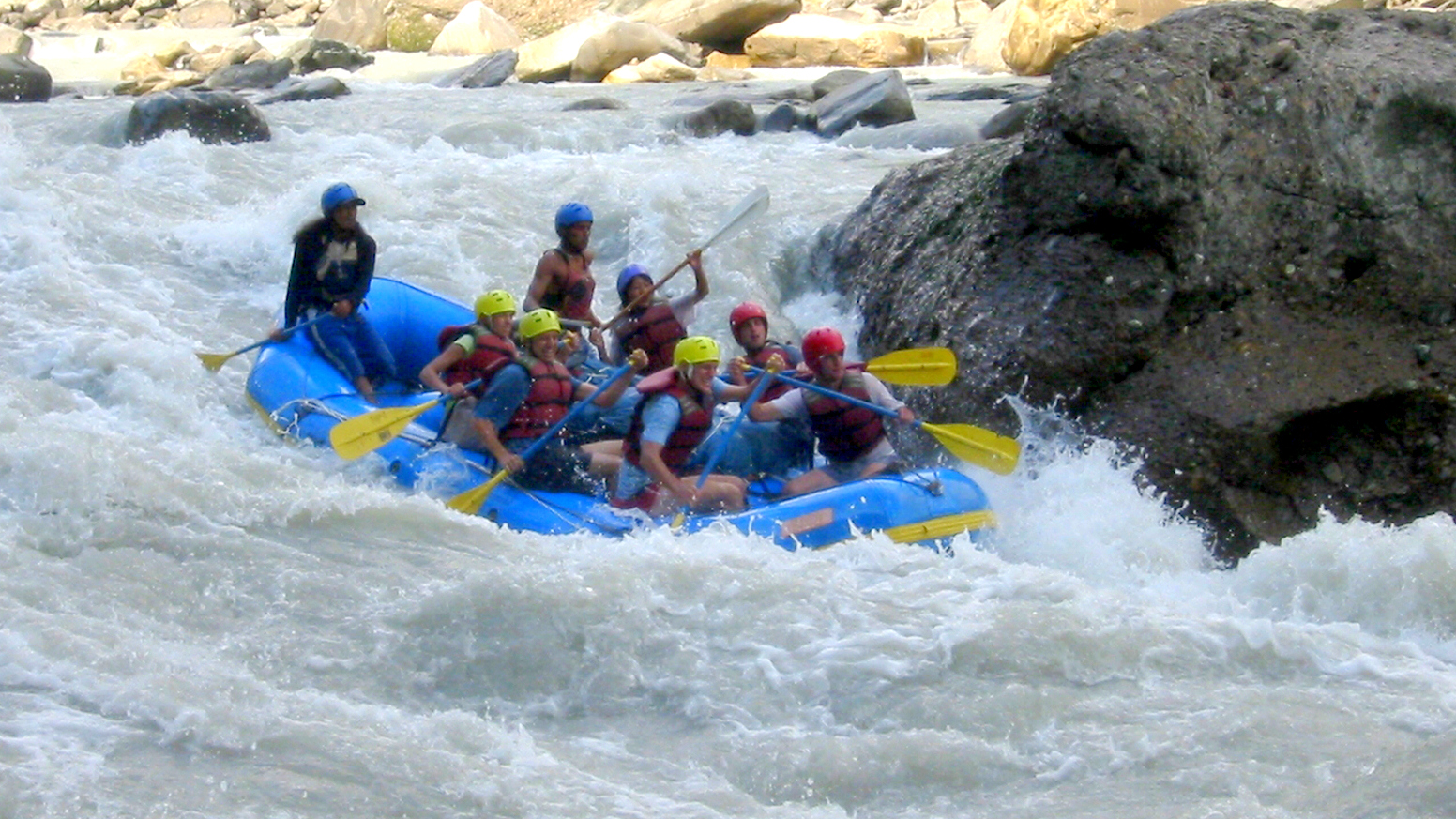
Jungle Safari: The national parks in the Terai region, such as Chitwan and Bardia, are less crowded during the monsoon. This is a great time to go on a jungle safari, as the dense foliage offers a lush habitat for wildlife. The parks are home to tigers, rhinos, elephants, and a myriad of bird species.
Canyoning: Canyoning involves navigating your way through canyons using a variety of techniques that may include other outdoor activities such as walking, scrambling, climbing, jumping, abseiling, and swimming. The increased water flow during the monsoon makes canyoning particularly thrilling in places like the Bhote Koshi River region.
Paragliding: For those who seek a bird's-eye view, paragliding in Pokhara during the monsoon can be a unique experience. The lush landscapes and dramatic cloud formations add to the beauty and excitement of soaring above the valley. Weather conditions do need to be monitored closely for safety.
Zip-Flying: Nepal offers some of the world’s most extreme zip-flying experiences, particularly in Pokhara. The ride takes you over dense forests with stunning views of the monsoon-fed landscape and the mountains peeking through the clouds.
Mountain Biking: For cycling enthusiasts, the monsoon season presents a challenging yet exhilarating opportunity to explore the rugged trails of Nepal. The Kathmandu Valley, in particular, offers numerous routes that become more adventurous with the muddy and slippery conditions.
Fishing: Monsoon is an ideal time for fishing enthusiasts to head to Nepal’s rivers and lakes, which are teeming with fish like the Mahseer. Fishing during the monsoon requires patience and skill, making it a rewarding experience for those looking for a quiet adventure.
Bird Watching: The lush environment during the monsoon attracts a variety of migratory and local birds, making it a great time for bird watching. The Koshi Tappu Wildlife Reserve is particularly famous for its avian population during the rainy season.
Safety Tips:
- Check the weather forecast regularly to avoid being caught in severe weather conditions.
- Always have a guide for activities like rafting, canyoning, and jungle safaris.
- Wear appropriate gear, including waterproof clothing and footwear, to handle the wet and slippery conditions.
The monsoon season in Nepal does not have to be a deterrent for adventure seekers. With proper planning and the right activities, it can offer a uniquely thrilling experience enriched by the country’s natural beauty and lush landscapes.
Best Trekking Destinations in Nepal During the Monsoon Season
Trekking in Nepal during the monsoon season can be challenging due to the rain, slippery paths, and potential for leeches, but there are certain regions that are more suitable for trekking during these months due to their unique geographical characteristics. Here are the best trekking destinations in Nepal that are ideal for monsoon adventures:
Upper Mustang Trek: Located in the rain shadow of the Himalayas, the Upper Mustang is largely unaffected by the monsoon rains. This area offers a stark, beautiful landscape that resembles the Tibetan plateau with its barren, rugged trails and deep canyons. Trekking through Upper Mustang leads to ancient monasteries, traditional Tibetan villages, and stunning views of Nilgiri, Annapurna, and Dhaulagiri.
Nar Phu Valley Trek: Similarly shielded from the monsoon rains, the Nar Phu Valley is a remote area that offers a mix of high peaks and passes, ancient villages, narrow canyons, lovely forests, amazing rock formations, yaks, gompas, and unique Himalayan cultures. The trek requires a special permit, as it goes through a region that was only opened to tourists in 2003.
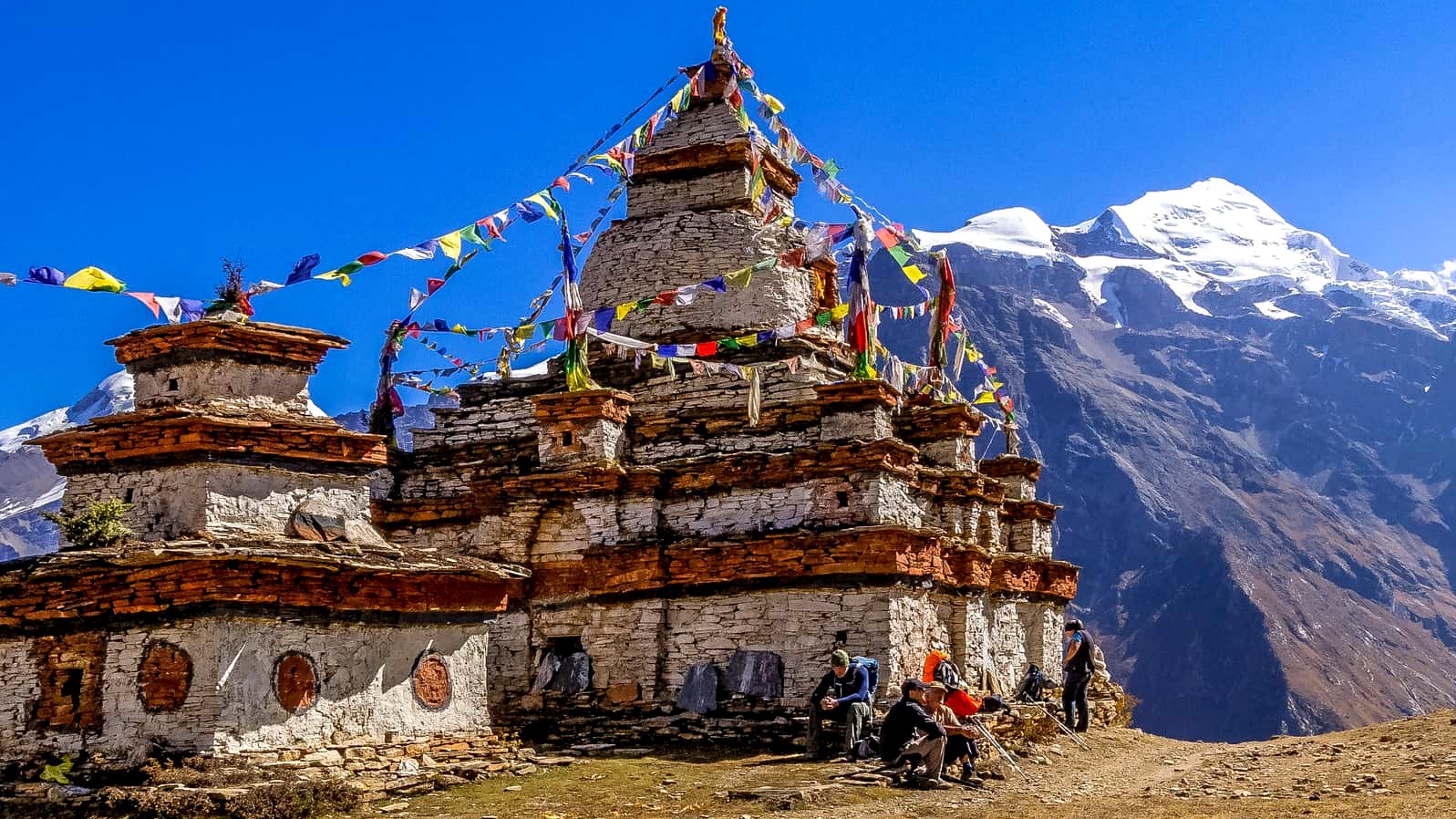
Dolpo Region: Another destination in the rain shadow area, the Dolpo region, offers an excellent trekking experience during the monsoon. This remote region is home to Shey Phoksundo National Park, which features the stunning Phoksundo Lake, beautiful waterfalls, and a rich variety of wildlife. The trek also introduces trekkers to the fascinating culture of the local Tibetan-descendant Dolpo people.
Annapurna Circuit (partial): While certain parts of the Annapurna Circuit are affected by the monsoon, sections of it lie in the rain shadow, particularly the northern parts around Manang. This allows trekkers to enjoy the dramatic changes in landscape from lush green paddy fields and subtropical forests to the arid high-altitude cliffs and mountain scenery.
Jomsom Muktinath Trek: This trek is part of the Annapurna Circuit that is feasible during the monsoon, as it traverses the lower rain shadow area of the Annapurna range. The trek offers a variety of landscapes, from the forests and orchards of the lower sections to the arid Tibetan plateau-like scenery around Jomsom and Muktinath.
Trekking Tips for the Monsoon Season:
- Pack appropriately: Include waterproof gear and bags, quick-dry clothing, and protective footwear.
- Prepare for leeches: Carry salt or tobacco, which are effective at deterring leeches.
- Stay informed: Always check local weather forecasts and trail conditions before and during your trek.
- Hire a local guide: Navigating trails during the monsoon can be tricky. Local guides not only enhance safety but also enrich your trekking experience with their knowledge of the area.
Trekking in these areas during the monsoon not only avoids the heavy rains but also provides a unique perspective on the landscape and culture, with fewer tourists and more vibrant local life.
Serene Tea Gardens in Nepal During the Monsoon Season
The monsoon season in Nepal, despite its reputation for heavy rains, presents a uniquely lush and verdant landscape, particularly in the tea gardens scattered across the eastern regions. These gardens, thriving with renewed vitality, offer a serene and picturesque setting ideal for visitors seeking tranquility and a taste of local agriculture. Here's a closer look at the tea-producing areas you can explore during the monsoon:
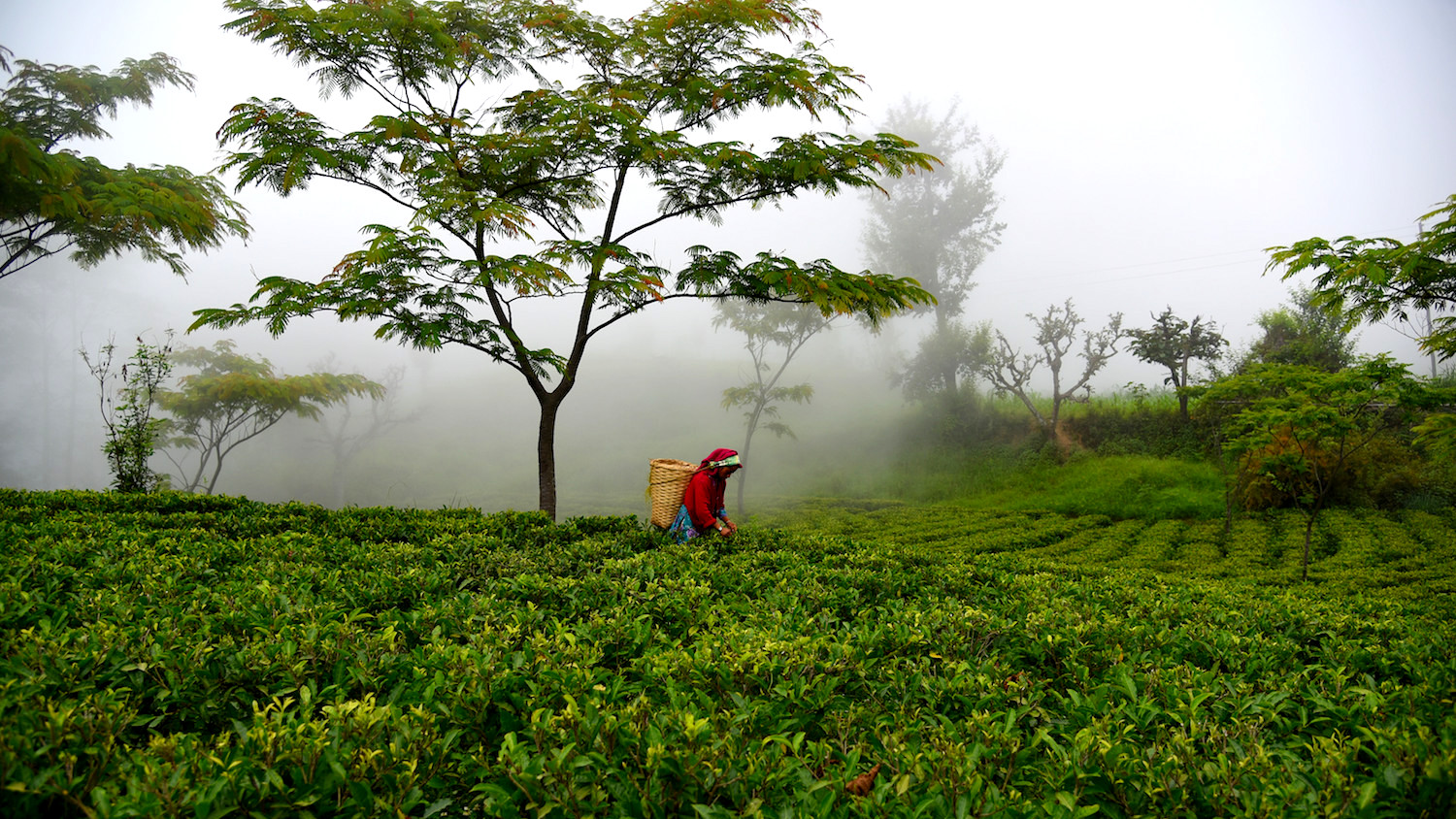
Ilam: Renowned as Nepal's tea country, Ilam boasts rolling hills covered with tea plants that flourish in the monsoon rain. The district's tea gardens, such as Kanyam and Fikkal, are especially scenic during this season. The fresh, misty air mixed with the earthy aroma of wet tea leaves creates a soothing atmosphere, perfect for leisurely walks and photography. Visitors can also learn about the process of tea plucking and processing which continues vigorously during these months.
Dhankuta: Another significant tea-producing area, Dhankuta offers a quieter, less commercial experience compared to Ilam. The gardens here are smaller but equally captivating with their lush greenery and panoramic views of the surrounding mountains, enhanced by the monsoon mists. Dhankuta provides an intimate glimpse into the lives of the local tea farmers and the meticulous care that goes into cultivating high-quality Nepali tea.
Terhathum: Though lesser-known, the tea gardens in Terhathum district are worth visiting for their authentic charm and the excellent quality of tea produced. The monsoon season sees these gardens at their greenest, with small streams and rivulets formed by the rainwater adding to the picturesque setting. The area is also ideal for bird watching, as the dense foliage attracts various local species.
Panchthar: Completing the Eastern Nepal tea circuit, Panchthar's tea gardens are similarly enchanting. The region's tea is distinguished by its unique flavor profiles, which can be sampled directly from the local estates. The monsoon enhances the natural beauty of Panchthar, making it a perfect spot for those looking to combine a tea garden tour with the tranquil beauty of Nepal's rural landscapes.
Visiting Tips:
- Wear waterproof boots: The grounds can be slippery and muddy, so proper footwear will make your walks safer and more comfortable.
- Carry rain protection: An umbrella or a raincoat is essential to enjoy the gardens despite the intermittent downpours.
- Check local opening times: Some gardens might adjust their visiting hours during the monsoon, so it's good to check ahead.
A visit to Nepal’s tea gardens during the monsoon offers not just a visual treat but also a deep dive into the cultural fabric of the region. The lush, mist-covered hills provide a refreshing contrast to the often arid landscapes seen in other parts of the world, making these tea gardens a must-visit for anyone traveling to Nepal during the rainy season.
Best Tour Packages in Nepal During the Monsoon Season
Despite the challenges posed by the monsoon season, Nepal still offers a range of exciting tour packages that cater to diverse interests and provide unique experiences. Here are some of the best tour packages you can consider if you're planning to visit Nepal during the monsoon:
Cultural and Heritage Tours: Explore the rich cultural heritage of Nepal with tours that focus on its historic cities and sacred sites. A typical package might include guided tours of Kathmandu's UNESCO World Heritage Sites like Pashupatinath Temple, Swayambhunath, and Patan Durbar Square, where you can witness religious ceremonies and the monsoon's impact on the ancient architecture. These tours are excellent for those who prefer less physically demanding activities and have a keen interest in history and culture.
Wildlife Safari Packages: The national parks in the Terai region, such as Chitwan and Bardia, offer lush landscapes and active wildlife during the monsoon. Safari packages might include elephant-back safaris, jeep tours, and guided jungle walks. This is a great time for wildlife enthusiasts to see animals like rhinos, tigers, and a variety of birds in their natural habitat, as the greenery is dense and water sources are plentiful.
Wellness and Retreat Tours: For those looking to rejuvenate, Nepal offers wellness and retreat packages that combine yoga, meditation, and spa treatments with stays in serene locations like Pokhara or Nagarkot. These retreats often include Ayurvedic consultations and treatments, holistic wellness sessions, and nutritious, local cuisine, making the most of the tranquil monsoon atmosphere.
Adventure Tours: For the more adventurous, there are monsoon-friendly adventure tours that include activities like white-water rafting, paragliding in Pokhara, and zip-lining. The increased water levels during the monsoon make for thrilling rafting experiences on rivers like Trishuli and Bhote Koshi.
Scenic Nature Tours: Experience the beauty of Nepal's lush landscapes with scenic nature tours. These packages often include visits to places like the serene Phewa Lake in Pokhara, where you can enjoy boating and the views of the misty Himalayan peaks, or the picturesque hill stations like Dhulikhel for panoramic views of the monsoon-drenched mountains.
Tea Estate Tours: Visit the tea gardens of Ilam or Dhankuta, where you can learn about tea production and enjoy tastings. The monsoon season sees these estates at their greenest, offering stunning landscapes and a cool climate, ideal for leisurely walks and relaxation.
Choosing a Tour Package:
- Consider your interests: Whether it's culture, wildlife, adventure, or relaxation, choose a package that aligns with what you want to explore.
- Check for inclusivity: Ensure that the package includes all necessary amenities such as accommodation, transportation, and guided tours.
- Read reviews: Look up reviews from previous travelers to gauge the quality of the tour and the reliability of the tour operator.
- Prepare for the weather: Even if the package is monsoon-friendly, prepare for sudden weather changes and pack accordingly.
Touring Nepal during the monsoon can be a rewarding experience, offering lush landscapes, vibrant culture, and a less crowded environment. With the right package, you can enjoy a memorable visit to this beautiful country, even during the rainy season.
Wildlife Encounters in Nepal During the Monsoon Season
The monsoon season, while known for its rains and lush landscapes, also offers exceptional wildlife watching opportunities in Nepal. This period is particularly thrilling for nature enthusiasts who wish to explore the vibrant ecosystems that thrive during the rainy months. Here are key locations and experiences for wildlife encounters in Nepal during the monsoon:
Chitwan National Park: Recognized as one of the best wildlife-viewing national parks in Asia, Chitwan comes alive during the monsoon as the fresh vegetation provides ample food for the diverse fauna. This UNESCO World Heritage site is home to the endangered one-horned rhinoceros, Bengal tigers, and gharial crocodiles. The park's elephant grass grows tall during the monsoon, and while this can make some animals harder to spot, the experience of exploring in the dense greenery is unmatched.
Bardia National Park: Located in the western Terai region of Nepal, Bardia is another hotspot for monsoon wildlife tourism. It's known for being one of the last strongholds of the Bengal tiger in the region. The increased water levels in the rivers during the monsoon attract a variety of aquatic life and provide a lush habitat for deer, wild elephants, and the rare Gangetic dolphin.
Koshi Tappu Wildlife Reserve: This reserve is a bird watcher's paradise, especially during the monsoon when migratory birds join the resident species. Koshi Tappu hosts over 485 species of birds, including the rare Bengal florican and the great egret. The reserve's expansive wetlands swell during the rains, attracting an array of waterfowl and waders, making it an ideal spot for bird photography and ecological studies.
Shivapuri Nagarjun National Park: Just north of Kathmandu, this park offers a quick escape into nature. During the monsoon, the park's forests are teeming with biodiversity. Birdwatching is particularly rewarding here with the peacocks and various species of songbirds in full activity. The park also supports leopard, deer, and numerous butterfly species, which are more visible with the lush undergrowth.
Parsa Wildlife Reserve: This reserve sees fewer tourists and is excellent for those looking to enjoy solitude along with their nature exploration. Parsa’s wildlife, which includes leopards, sloth bear, and various deer species, benefits from the dense foliage of the monsoon, making it an exciting destination for those who appreciate more adventurous wildlife tracking.
Safety Tips for Monsoon Wildlife Tours:
- Wear appropriate clothing: Long sleeves and pants not only protect from the monsoon mosquitoes but also from thorny plants and leeches.
- Use insect repellent: This is essential to avoid mosquito and leech bites.
- Follow local guides: Their expertise is invaluable in navigating the lush, dense habitats safely and spotting wildlife.
Exploring Nepal’s national parks and reserves during the monsoon offers a unique perspective on the country’s natural heritage, showcasing the rich biodiversity that thrives in the wet season. This time of year adds a layer of adventure to wildlife encounters, making them all the more memorable.
Cultural Festivals in Nepal During the Monsoon Season
During the monsoon season, Nepal comes alive with a series of vibrant cultural festivals that showcase the rich traditions and spiritual depth of the country. These festivals provide a unique opportunity for visitors to experience the festive spirit that is an integral part of Nepali culture. Here are some key cultural festivals celebrated during the monsoon:
Janai Purnima: This Hindu festival typically occurs in August and is marked by the ritual of changing the Janai, a sacred thread worn by Brahmin and Chhetri men. The festival also involves widespread celebrations, with locals visiting temples to perform rituals and partake in traditional feasts. Special dishes like Kwati, a soup made from sprouted beans, are prepared and enjoyed by families.
Teej: Particularly significant for Hindu women, Teej occurs in late August or early September. Women fast and pray for the health and longevity of their husbands, while unmarried women seek blessings for a good spouse. Teej is celebrated with much fervor, featuring dancing, singing, and gatherings where women clad in beautiful red saris share stories and songs.
Nag Panchami: Celebrated by worshipping Nagas or snake deities, Nag Panchami falls in late July or early August. Devotees offer milk, sweets, and flowers at temples dedicated to snakes and pray for protection against snake bites and other misfortunes. It’s a time when traditional rituals and ancient customs come to the forefront, reflecting Nepal’s deep-rooted cultural beliefs.
Gai Jatra (Festival of Cows): This unique festival is not only about remembrance of the deceased but also includes parades, jokes, satires, and comedy performances, making it a lively event despite its somber roots. It occurs in August and is especially prominent in Kathmandu Valley, showcasing the local culture’s ability to blend mourning with celebration.
Indra Jatra: This is another major festival celebrated in the Kathmandu Valley during the monsoon. It marks Lord Indra’s descent from heaven in search of a special flower. Highlighted by the display of sacred masks and dances, the festival is a grand spectacle of devotion and festivity, featuring processions and traditional performances in the heart of Kathmandu.
Experiencing these festivals during the monsoon season allows travelers to see a different side of Nepal, characterized by a wealth of colors, emotions, and spiritual devotion. The monsoon not only brings rains but also a wave of celebrations that breathe life into the rich tapestry of Nepali culture.
Exploring Nepal during the monsoon season offers a unique perspective on this vibrant country, rich with lush landscapes, cultural festivities, and thrilling wildlife experiences. By choosing the right tour package, whether it’s delving into the cultural heritage, embarking on wildlife safaris, or engaging in monsoon-specific adventures like white-water rafting, you can fully embrace the beauty and vibrancy of Nepal in the rainy season. With proper preparation and a spirit of adventure, your monsoon trip to Nepal can turn into an unforgettable journey filled with rich experiences and magical moments.
FAQs of the Monsoon Magic: Explore Nepal During the Rainy Season
Q: What is the best time to visit Nepal during the monsoon?
A: The monsoon season in Nepal typically lasts from June to September. For those looking to explore during this period, early June and late September are often considered the best times as the rainfall is usually less intense, allowing for more comfortable travel and exploration.
Q: What kind of clothing should I pack for Nepal's monsoon season?
A: Pack light, breathable, and quick-drying clothing along with waterproof jackets, pants, and sturdy waterproof footwear. Don't forget to include a waterproof backpack cover and an umbrella or a high-quality rain poncho.
Q: Are there any festivals in Nepal during the monsoon that I can attend?
A: Yes, several significant festivals occur during the monsoon in Nepal, including Janai Purnima and Teej. These festivals are great opportunities to experience local traditions, music, dance, and food.
Q: What precautions should I take while trekking in Nepal during the monsoon?
A: Trekking during the monsoon requires extra precautions such as ensuring you have waterproof gear, being prepared for leeches and slippery trails, and using a knowledgeable local guide. It's also important to be flexible with your plans as weather conditions can change rapidly.
Q: Can I still go on wildlife safaris in Nepal during the monsoon?
A: Yes, wildlife safaris in Nepal's Terai region, such as in Chitwan and Bardia National Parks, are still possible and can be quite rewarding during the monsoon as the vegetation is lush and wildlife is more active.
Q: How should I deal with leeches during monsoon treks?
A: To protect against leeches, wear leech socks or tuck your pants into your boots. You can also apply salt or lemon juice on your shoes and socks to deter them. Regularly check your body and clothing for leeches during and after walks.
Q: Is it safe to travel to Nepal during the monsoon?
A: Traveling to Nepal during the monsoon is generally safe, but it is essential to be cautious of landslides and flooding, especially when travelling in rural and mountainous areas. Always stay updated with local weather reports and follow advice from local authorities and guides.
Q: What are some indoor activities I can enjoy during the monsoon in Nepal?
A: Nepal offers many indoor activities such as visiting museums, art galleries, cultural centers, and temples, which can provide rich cultural insights and a break from the rain.
Q: How can I best experience the natural beauty of Nepal during the monsoon?
A: To experience the natural beauty during the monsoon, consider visiting the lush green valleys, vibrant rice terraces, and blooming gardens. Short hikes in lower altitude areas and drives through the countryside can also be exceptionally beautiful.
Q: What should I know about health precautions during the monsoon in Nepal?
A: During the monsoon, there's a higher risk of waterborne diseases. Drink only bottled or purified water, avoid raw vegetables and street food, and use mosquito repellent to protect against insect-borne diseases.
If you need any further information, please contact us by email: at [email protected], Phone: at +977- 985 100 5129 (WhatsApp)

